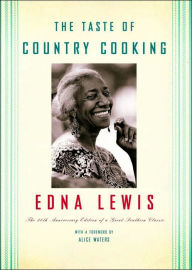Virginia Willis is a French-trained chef, television producer, food stylist, cooking teacher, and food writer. Formerly Martha Stewart Living's kitchen manager, she now makes her home in Atlanta, Georgia.
THE AUTHOR SCOOP
Tell me a story that other people might not know about you.
People generally think I am a Southern lady, but I turn into a big old redneck at Atlanta Braves games
Have any good pet stories?
Our pets usually all have food names – we've had Butterbean and Peanut. Our cats are Earl Grey, Biscuit, and Smokey. Our recent rescue is a dog named Cricket. I wanted to name her Cracker, but that's somewhat of a derogatory term in the South, so we decided against it. We also have 3 chickens and since it's kind of country to have chickens in town, we named them Patsy, Tammy, and Loretty for the country music singers. (It's important to say Loretty, not Loretta, just like Doo called Loretta in A Coal Miner's Daughter.
Favorite cocktail?
I'm from Georgia; Bourbon and water.
Do you have a scar anywhere on your body? How did you get it?
I have more than one – the most interesting one is on my temple. We were fishing in the Gulf and a friend caught a sea catfish. Their barbs are poisonous, so he tried to flip the fish off the hook instead of touching the fish. Well, he did – right into my head. Since it was a head wound, it bled profusely. We were out on a little island and we had to get back to the dock to take me to the hospital. It was all fine, but could have been very serious. Another inch and I would have lost my eye. The funniest part is the doctor, of course, cleaned the wound, but a year later I found myself scratching the scar and a little piece of catfish barb came out!
What was your first job?
Making pizza @ Pizza Pronto. I also had to deliver pizza for a short period of time. Then once, I delivered a pizza in a sketchy area and a man followed me. I got back to the car, my heart beating, and he came up to the car and said, "I was worried about you; you don't need to come here by yourself. Go back to your store and tell your boss you won't do it." And, I did.











